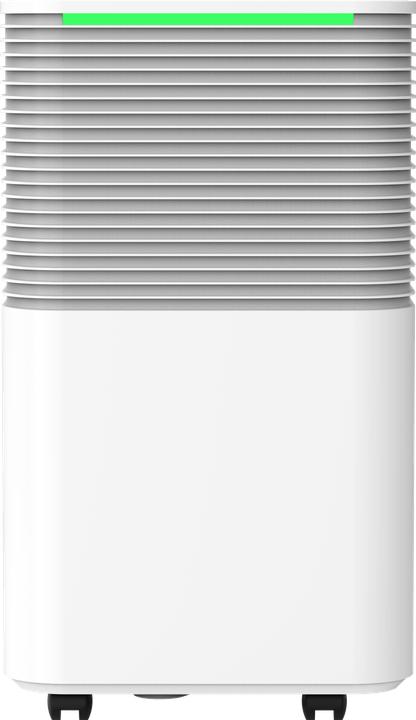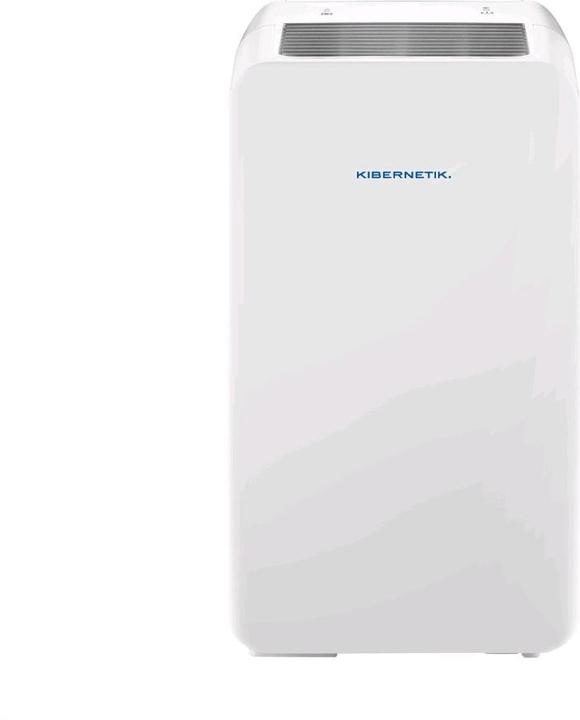

Following recent storms, demand for dehumidifiers soars
Dehumidifiers are more in demand now than ever. Galaxus and Digitec sold 91 per cent more of the appliances in Switzerland in 2024 than in the previous year – and five times as many as in 2020. The boom is being driven by new buildings with improved insulation. In addition, several storms late last year led to flooded cellars.
Condensation on windows, mould in corners, stains on the ceiling. 20-25 per cent of Swiss households struggle with moisture problems according to the Federal Office of Public Health (FOPH) (linked article in German). If you don’t react quickly, you risk both damage to the building and interior design, but also health consequences. According to the FOPH, mould irritates the eyes, skin and respiratory tract, and spores can trigger allergies. Mould is particularly dangerous for people who suffer from chronic asthma, cystic fibrosis or a weakened immune system.
But sprays, brushes and wall paint can often quickly remedy the symptoms. Still, it’s all caused by moisture. And it seems more and more people are combatting this with dehumidifiers. In 2024, Galaxus and Digitec customers bought 91 per cent more of these devices than in 2023, totalling several tens of thousands of units. According to figures from market researcher GfK, a good two-thirds more dehumidifiers ended up in shopping carts or shipping boxes across Switzerland last year. Compared to 2020, Galaxus and Digitec even sent five times as many dehumidifiers through the post.
Daniela Sanzoni oversees the dehumidifier range on Galaxus and Digitec. She sees two main reasons for the boom: improved insulation in new and renovated buildings as well as the increasing frequency of storms.
When airing out your house isn’t enough
«Modern houses and flats are designed for energy efficiency,» says Daniela. «They’re sealed down to the last window pane to save power on electricity and heating.» As a result, however, there’s often a lack of fresh air entering interior rooms from outside. The result: a poor indoor climate.
Humidity is also too high in many places since we let in air the wrong way or too infrequently. In winter in particular, Daniela recommends so-called shock ventilation, where you open windows or doors across from each other all the way. According to the FOPH, the rule of thumb is to open all windows and doors for five to ten minutes three times a day. «If that’s not enough, a dehumidifier can help,» says Daniela.
Extreme weather boosts demand
Last year, however, the weather also had a strong influence on demand. From mid-June, there was heavy rainfall, particularly in Valais and Ticino, causing rivers and streams to rise rapidly. Floods and debris flows caused major damage to settlements and infrastructure. In Ticino, demand for dehumidifiers rose by 143 per cent in 2024.
This was exacerbated by the fact that the spring was already rainy and soil was wet as a result. What’s more, there was still a lot of snow in the mountains for the time of year. «As a result, rivers and lakes rose rapidly and sharply,» said the Federal Office for the Environment FOEN in a mid-July status report (page in German). At the Rhone-Reckingen and Reuss-Andermatt measuring points, water levels rose to a point that, according to past measurements, only occurred every 100 to 300 years.
According to figures from MeteoSwiss, it also rained a good six per cent more in Switzerland last year than the long-term average. By contrast, 2022 was a particularly dry year. This is all reflected in the sales data from Digitec Galaxus. «The storms and generally very high humidity have triggered a boom in demand this summer,» says Daniela. Flooded cellars, muddy garages and soaked living rooms finally had to be dried out again. Two years previously, however, the same appliances were in particularly high demand in winter.
If the long-term trend continues, the demand for dehumidifiers will likely increase further, even if we experience dry summers from time to time. This is indicated by FOEN data. Between 1900 and 1949, an average of 18 flood discharges occurred in the Swiss catchment areas of the Aare, Adda, Adige, Inn, Limmat, Reuss, Rhine, Rhone and Ticino. Between 1950 and 1999, there was an average of 50 such events, between 2000 and 2016 there were as many as 81. More recent figures aren’t included in the statistics.
According to the Mobiliar Lab for Natural Risks at the University of Bern, air can store seven per cent more moisture for every degree Celsius by which the atmosphere warms up. Without climate protection, precipitation in Switzerland is likely to increase 10–20 per cent by the end of the century. One in seven Swiss residents will live in a building at risk of flooding (page in German).
The FOEN also warns as to the risk of more frequent flooding. Quoted in NZZ, the Federal Office states: «The CH2018 climate scenarios show that climate change will lead to more extreme events: heavy precipitation, but heat and drought periods will also occur more frequently and more severely in the coming decades. As a result, protecting against natural hazards is «an ongoing task of increasing importance».
Dehumidifier manufacturers will already be rubbing their hands in glee.
Have you recently bought a dehumidifier? What experiences have you had with mould? Any tips for the Community? Let us know in the comments!
At Digitec and Galaxus, I’m in charge of communication with journalists and bloggers. Good stories are my passion – I am always up to date.
News about features in our shop, information from marketing and logistics, and much more.
Show all




